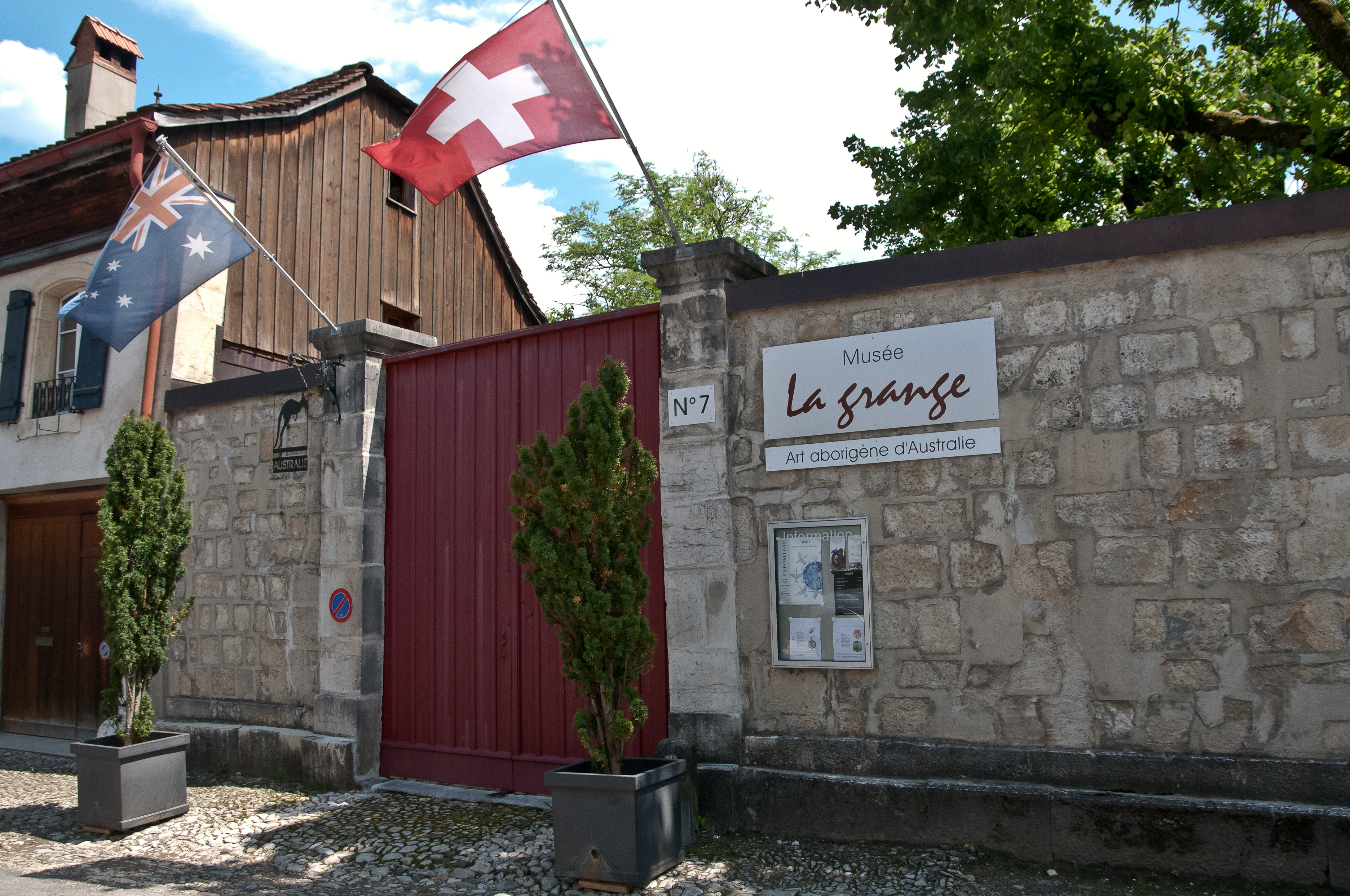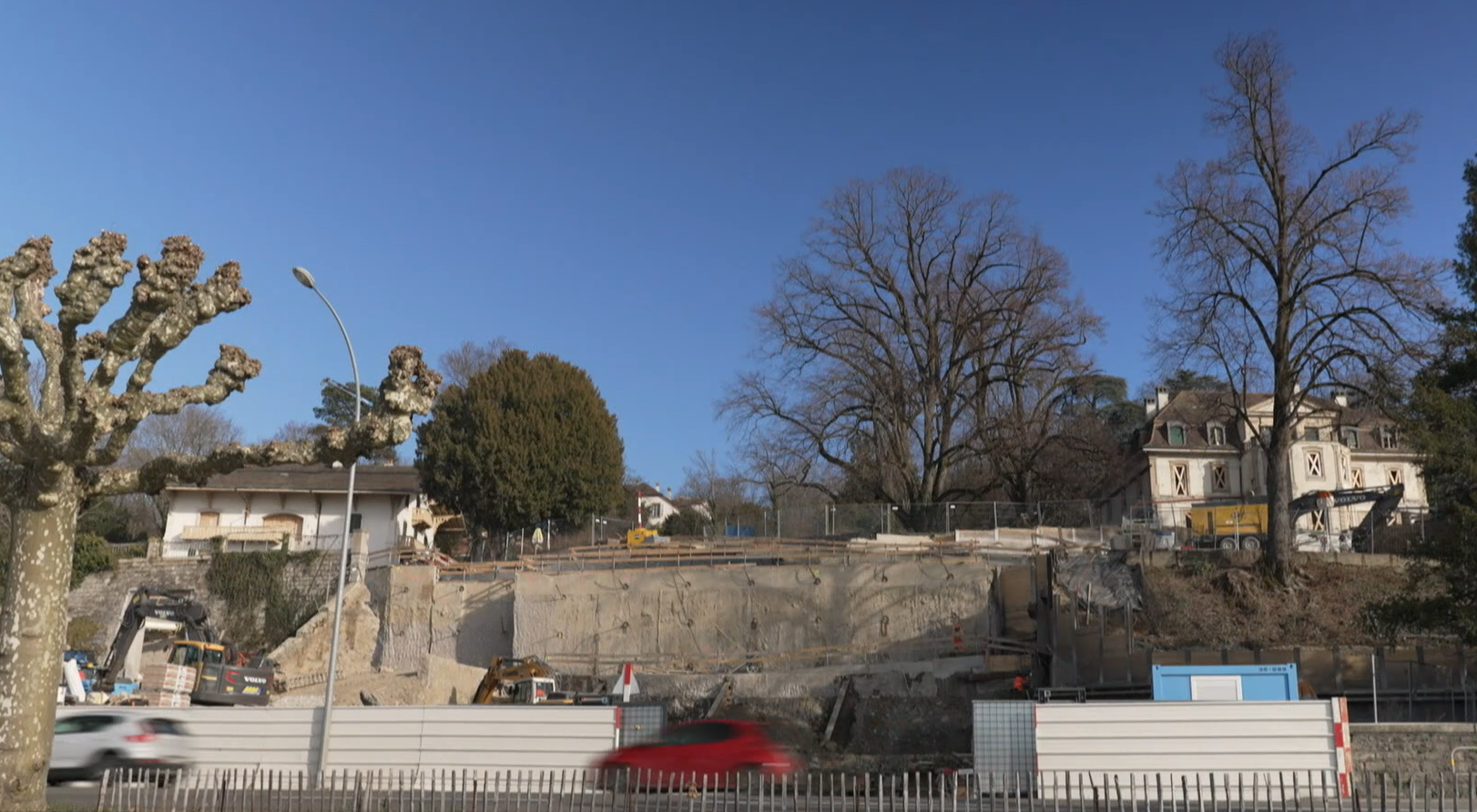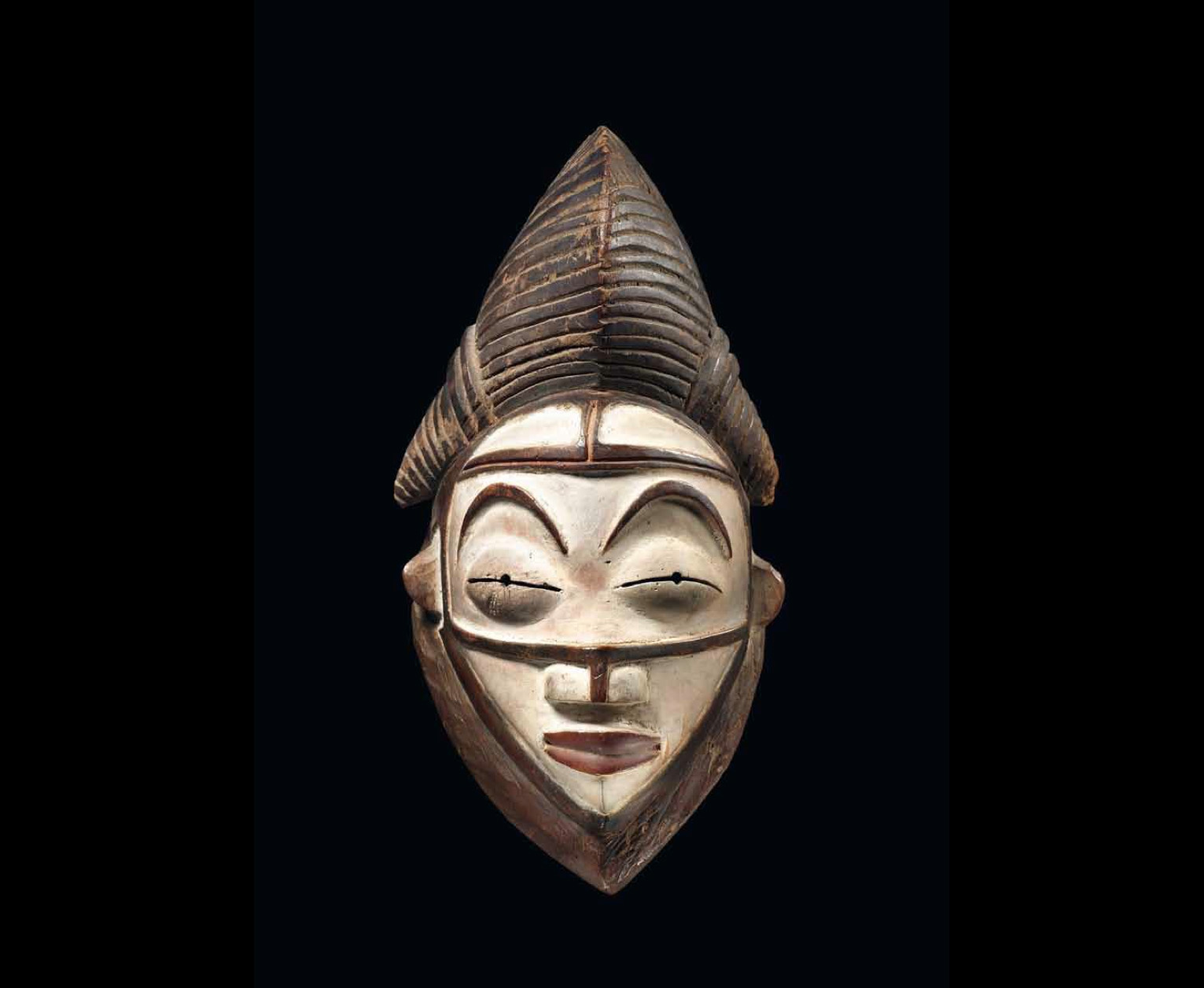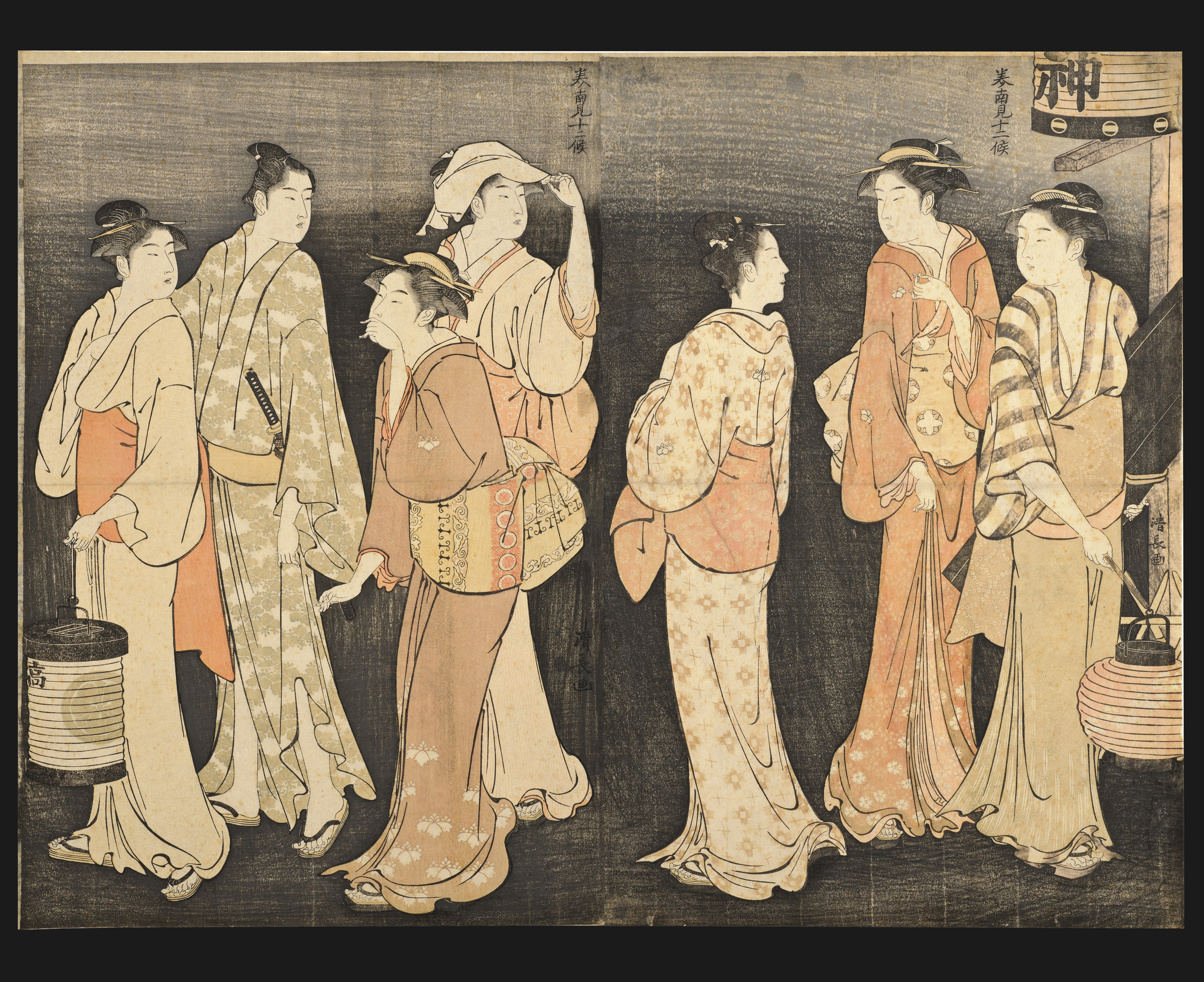Aboriginal art in the home of absinthe

Môtiers, a small Swiss village near Neuchâtel, is home to the second-biggest aboriginal art museum in Europe. swissinfo.ch went off the beaten track to look at the collection.
The rolling green hills around Môtiers don’t have much in common with the Australian outback, but neither is the village at the end of the Val de Travers valley one of the busiest places in Switzerland.
This is a village of 800 people who are more used to being associated with the green absinthe fairy. Indeed the absinthe museum is one of the first things you see as you walk through the village.
But Môtiers is in fact a cultural capital – albeit Australian culture. La Grange museum is part of the Château d’Ivernois and is filled with aboriginal art. At the moment it is home to “Waii” – an exhibition of the engravings of Dennis Nona, a print-maker from the Torres Strait Islands in the north of Australia.
“The artist was born into a community that lives by and from the sea, so he began by carving wood sculptures,” explained Theresa Burkhardt-Felder, one of the museum’s founders.
“Dennis Nona uses etching and linocuts to tell stories rooted in his Torres Strait culture. His works are often complex, with addition of colour that makes them almost three-dimensional. He manages to tell a whole story from his homeland in just one image.”
“Waii”, means “tide” and it is also the name of a mythical warrior whose home is the artist’s island. A closer look at the 50 works show common threads – stylised fish, shells and birds – but the idea is to show a universe with maritime and celestial echoes, which gives a window onto how the islanders view the universe.
Art evolution
Theresa and Gérard Burkhardt-Felder returned to Switzerland around ten years ago after 25 years in Australia. They lighted upon Môtiers because the Château d’Ivernois seemed an ideal location to store and display their Aboriginal works of art. The hundreds of pieces form the collection of their Burkhardt-Felder Art and Culture foundation.
“We left for Australia in 1981 and were very happy there,” Theresa Burkhardt-Felder said. “We learnt about the history of the country and we were lucky enough to witness an evolution in the way aboriginal art was perceived.”
Aboriginal culture is some 60,000 years old, making it one of the world’s oldest. The language was a spoken one. Aborigines hark back to “Dreamtime”, a sacred era when they believe the world was created.
These stories and traditions were passed down from generation to generation orally, but also via drawings in sand, cave drawings and in some regions via images scratched onto tree bark.
But perhaps the most important transfer of knowledge was via body paintings for ceremonies, using a substance made out of ochre, which had the same prestige as gold in the Western world.
Symbolic abstraction
“This people dreamt up creator ancestors, who came from the earth and made it habitable,” she explained.
“Their myths and legends talk of a sorcerer who created rain, constellations [their lives were governed by the stars] and natural phenomena. Their paintings always have a link to the earth, to nature, to animals, even if it’s in an abstract way.”
This ephemeral art really only gained recognition in the 1970s, when tribes chased away from their homelands were encouraged to paint on all kinds of different surfaces and materials. Then they were given modern materials, canvases and acrylic paints.
“The new techniques enabled aborigines to produce works that were much more complex and innovative and could fully demonstrate the richness of their art, because finally, their art could travel.”
When the couple began to miss Switzerland, they came back “with the idea of doing something for Australia and its indigenous people’s art. We thought we could, for example, make it more widely known in Switzerland,” she said.
Not artefacts, but artworks
La Grange museum was opened in 2008. “We started off with big themed exhibitions. We wanted to present and explain the spiritual beliefs of these people and to show what a huge diversity there is between the different regions,” Theresa Burkhardt-Felder said.
“The art created by the semi-nomads is more minimalist and abstract, because their horizons are wide and they don’t have many focal points to break it up. In the forested regions, the art will be more figurative. And in seaside areas, the Aborigines have again different ancestors.”
Sometimes groups will paint together, in a ritual where they express the love for their earth, of which they consider themselves to be the traditional guardians.
Over the past 20 years, some artists have become well-known and the price has shot through the roof.
The best known is perhaps Emily Kame Kngwarreye, who had a very brief career, after beginning to paint for a public audience in her seventies. She was one of the first aboriginal artists to adopt new techniques, and her talent was recognised almost as soon as she was exhibited. Shortly after her death in 1996, her work represented Australia in the 1996 Venice biennale.
Aboriginal art is unusual in that it has very recently had a new impetus, and like any art, it reflects the energy of the artist’s era, Theresa Burkhardt-Felder explained.
“Nowadays this is no longer ethnographic art but contemporary art – it’s bringing together ancestral beliefs and modern interpretations.”
When the British colonised Australia in the 18th century, they considered they were taking over an “empty” country.
This principle was abolished in 1992, but the majority of ancestral lands have yet to be restored to the indigenous people whose ancestors previously lived on them.
Aboriginals, who lived semi nomadically, were severely affected by disease and many were massacred. Thousands of children were forcibly separated from their family in the 20th century.
In 1967, more than 90% of Australians approved a referendum to include the Aboriginals on the electoral list.
The most considerable expression of regret happened in 2008 when the Australian government extended an official apology for centuries of massacres, persecution and racism.
Aboriginal people make up 2.5% of the Australian population or some 517,000 people. 69% of them now live in major urban centres.
The average weekly salary of indigenous Australians comes to 278 dollars (SFr266), or 59% of the average non-indigenous Australian wage. (Source: Australian Human Rights Commission, 2006)
Waii – The engraved work of Dennis Nona comprises more than 50 etchings and linocuts.
The exhibition is running at the Burkhardt-Felder Arts and Culture Foundation, in the Château d’Ivernois at Môtiers (canton Neuchâtel). The museum is open from June until November and gets several thousand visitors a year.
Dennis Nona was born in 1973 on the Torres Strait Islands, where there is a strong Melanesian culture. He is displayed in all Australia’s national museums as well as in several important collections outside Oceania, notably in Paris. He is currently studying for a master’s degree in visual arts in Brisbane.
Waii, the title of the exhibition, means “tide” and is also the name of a mythical warrior native to Dennis Nona’s island, and also the name of his ancestor. His works draw heavily from his traditional culture and evoke legendary stories and myths, ancestral beliefs, animism and marine creatures.
(Translated from French by Victoria Morgan)

In compliance with the JTI standards
More: SWI swissinfo.ch certified by the Journalism Trust Initiative










You can find an overview of ongoing debates with our journalists here . Please join us!
If you want to start a conversation about a topic raised in this article or want to report factual errors, email us at english@swissinfo.ch.